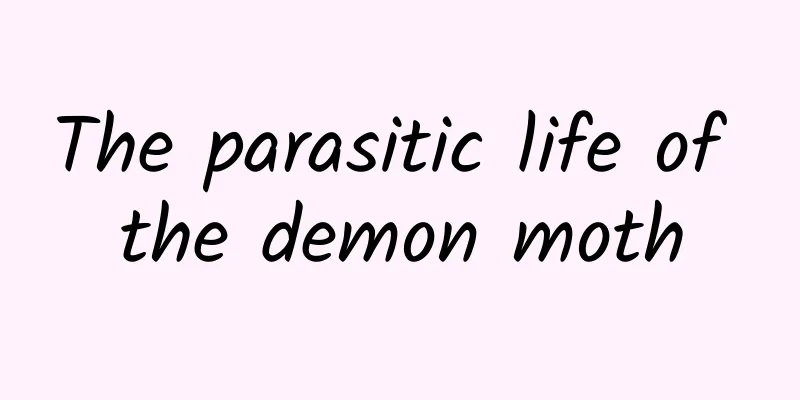A frog draws for a week: Get to know the "magic brush Ma Liang" in the Institute of Biology

|
Author: Yang Chen In the days when there were no cameras or color films, specimens collected during field expeditions were recorded entirely with a pen. The pen could record what one saw and heard, and could also preserve the precious images of plants and animals for subsequent research or illustrations in books. This type of drawing is collectively called scientific drawing. Different from the paintings we see in daily life, scientific drawing is a combination of artistry and science, with science being put first. Scientificity means rigor and truth-seeking. In the history of research on amphibians and reptiles at the Chengdu Institute of Biology, Chinese Academy of Sciences (hereinafter referred to as Chengdu Institute of Biology), a few people insisted on sketching and coloring on paper, carefully recording every inconspicuous spirit of nature. To "restore" every detail of the amphibians as closely as possible, the "Ma Liang"-like painting skills require accumulated skills and sufficient patience. The selection of drawing tools is particular and special drawing paper is purchased specially In the 1950s, Liu Chengzhao, the "grandfather" of amphibian and reptile research at the Chengdu Institute of Biology, published the first English monograph on amphibians and reptiles, which was accompanied by many colorful scientific drawings drawn by his draftsman Wang Yisheng. The collected specimens will change color once soaked in formalin, so in the days when there were no cameras, Liu Chengzhao would always bring Wang Yishen with him whenever he went out into the wild. After collecting the species, Wang Yisheng quickly sketched the animal's appearance with pen and paper, recording the characteristics, color and other information of each part. Make a rough draft in the wild, and then return to the laboratory to work carefully based on the records to capture the animals in their most vivid form. The drawings are so lifelike that even the translucent tails of the tadpoles are presented truthfully. To this day, these scientific drawings have high scientific research and artistic value and are the distinctive business card of the Amphibian Research Laboratory of the Chengdu Institute of Biology. After Wang Yisheng left, the burden of the institute's internal medicine drawing was handed over to Li Jian. Like his predecessors, he was not trained in fine arts, but relied on self-study to pursue scientific drawing from his youth to his sixties. At the age of 17, Li Jian came into contact with scientific drawing, and his initial drawings were plants. Later, due to a job change, he transferred to the Chengdu Institute of Biology in his 20s to specialize in painting amphibians. He would spend the whole day painting, and cervical spondylosis had troubled him for decades. Li Jian persisted because of his hobby. "In addition to the needs of the industry, I think this is what I should do and my duty." Every time he completes a work that he is satisfied with, Li Jian can gain a sense of accomplishment. He calculated that he has completed more than 700 scientific drawings so far. The "standard" of satisfaction is that it must be at least the same as the real thing and consistent with the researcher's description. "Sometimes frogs of the same species have slight differences in skin color due to the influence of sunlight in their habitat, so as long as the color of the painting is within a certain range, it meets the requirements," Li Jian told China Science Daily. Scientific drawings mostly use gouache, and the choice of brushes and drawing paper is very particular. Li Jian often uses very fine brushes, and he also goes to the White Horse Temple in the north of Chengdu to purchase special drawing paper. The paper is not as smooth as coated paper, and it absorbs water and is easy to wipe, making it convenient for making drafts. In Li Jian's words, with every stroke, the pen and paper work in "harmony" with each other, and the painting is delicate and clean, without any drag. Draw a frog in a week. Patience is the most important quality. Scientific drawing emphasizes scientificity, requiring the draftsman to be rigorous and meticulous. Only slow work can produce fine work. A ten-centimeter-long frog may take a week or even half a month to draw. The process is tiring and boring. Before starting to draw, the draftsman must use a microscope or magnifying glass to observe every detail of the animal and use a caliper to measure the length of each part to ensure that it is restored in proportion. You can't paint blindly. The frog has hooks on its fingertips, and you have to be careful about how long the hooks are, how many warts there are on its back, and how big each one is. Even a millimeter cannot be missed. Li Jian rarely goes out into the wild, but mostly paints indoors based on specimens or photos. "In most cases, I paint based on the specimens. If the color changes, I will 'restore' it based on the recorded information, and I must communicate carefully with the researchers to achieve the most satisfactory results." Drafting, coloring, polishing details, outlining, drawing eyes... these are Li Jian's usual steps in painting. "I like to paint the eyes last, because the eyes need to match the whole picture. Once the overall color tone of the whole picture is determined, I can better grasp the 'finishing touch'." Coloring a frog is not something that can be done in one go; you need to start from the simplest to the most complex. "Some skin colors go from yellow to green. After applying yellow and green separately, in order to make the two colors blend and transition naturally, you need to use a pen to 'wash' the colors out over and over again, slowly smearing and filling in." Li Jian said that sometimes when processing some details, you also need to draw shadows to enhance the three-dimensional effect, which requires slow thinking. No matter how good a painter is, if he lacks patience, he still can't draw a frog well. Li Jian said that sufficient patience is a necessary quality for scientific drawing. At the Chengdu Institute of Biology, many draftsmen have come and gone over the years. Some changed careers, some were transferred to other positions, and some gave up before they even got started. Only Li Jian and Wang Yisheng persisted. Unfortunately, there is no one to take over the scientific illustration work in the institute. Nowadays, if researchers need it, Li Jian, who is over 60 years old, will still pick up the paintbrush and carefully polish each work. Although he was familiar with the morphological characteristics of various frogs and was adept at this type of painting, Li Jian was unable to speed up his progress. "You still have to be slow and careful. If you draw sloppily or roughly, you will fail yourself first." Still learning PS painting at over 80 years old. Sense of responsibility is the biggest driving force Although the advent of cameras has greatly facilitated research work, scientific drawing still has its significance. "Drawings can more clearly reflect the characteristics of animals." Li Jian said that although there are specimens for reference in today's indoor research, some characteristics of the specimens will disappear after being soaked in chemicals, and drawings can help preserve this information and restore their former "colors." "Especially when writing a monograph on amphibians, it contains hundreds of species, but some species have disappeared and there are no photos left, so scientific drawings are needed to present them." "Drawings are more flexible than photos." Li Jiatang, director and researcher of the Amphibian and Reptile Museum, showed a scientific drawing of a black-webbed tree frog to China Science Daily. The frog was "flying" in the air, which was very lifelike. "The ability to glide in the air is a major feature of the black-webbed tree frog. It is not easy to capture such a moment with a camera, but scientific drawings can be used to 'restore' and reflect this feature." Fei Liang, a researcher at the Chengdu Institute of Biology, also has something to say about the importance of scientific illustrations. Currently, he and his wife and partner Ye Changyuan are working on the compilation of a new version of the English monograph on Chinese amphibians. A major highlight of this version is to record and display the different skeletal characteristics of each family, genera and species of amphibians. "Different bones lead to different functions of animals. Skeletons can reflect the systematic relationships, evolutionary history and processes of animals, and are of great significance in taxonomy," Fei Liang explained. The book insists on using a large number of scientific drawings because drawings can, to a certain extent, reflect the skeletal characteristics of animals more intuitively and clearly than photographs. Most of the scientific drawings were completed by Fei Liang, but the drawing format was changed. "I first dissected the specimen, placed its skull, sternum, spine and other parts under a microscope, and took pictures with a camera." However, Fei Liang was not satisfied with the photo because there were muscle fibers around the bones, which made the photo look "unclean" after being recorded by the camera, and the millimeter-level boundaries between the bones could not be clearly presented. In order to solve the problem of matching pictures, the elderly man in his eighties spent a week learning Photoshop with his granddaughter. Now, he can observe the specimens under the microscope while working on the computer, processing the bone photos in proportion, "Photoshopping out" the redundant parts, highlighting the important bone details, and drawing the pictures. To complete a complete set of frog skeleton diagrams, one needs to go through three stages: dissection, photography, and drawing, which takes ten days or even half a month. Such a set of pictures generally includes more than 20 pictures, showing the morphological characteristics of the frog skull's maxilla, mandible, spine, feet, toes, etc. "What supports you to stick to this work?" Faced with the same question, Fei Liang gave the same answer as Li Jian: "This is what I should do and my responsibility." China Science Daily (2022-04-08 Page 4, Culture) Editor | Zong Hua Typesetting | Guo Gang |
<<: When it comes to eating spicy food, humans are not the "light of mammals"!
>>: 60 times the limit! Well-known yogurt was investigated... How to choose yogurt?
Recommend
At the Desert Museum, I was surrounded by coyotes and wild boars
What does a desert look like? You may think of th...
Brand promotion: How to do low-cost marketing?
When it comes to "low-cost marketing" ,...
A man was scared when 2 liters of oil were drawn from his blood during a physical examination
Recently, Mr. Wang from Hankou had a very profoun...
Teach you step by step to build a user membership system!
Now membership has become the main means of monet...
Breaking news: Spacewalks on the International Space Station were completely halted. The reason was that the space suit helmet was leaking?
According to media reports, on August 5, an astro...
DJI is not the only company that has experienced frequent drone explosions: The drone industry still has a long way to go to mature
Recently, an article titled "Frequent explos...
Information flow ads are a must-see! 3 material optimization analysis methods can be applied
The impact of advertising materials on advertisin...
Can light travel through "time cracks" and interfere with the past and future? Scientists prove it for the first time
Science Fiction Network, April 13th. Scientists h...
Serialized storage of objects: Serializable and Parceable
When developing Android, we sometimes need to use...
The United Nations also celebrates the Spring Festival! The General Assembly resolution designates the Spring Festival as a United Nations holiday
On the 22nd local time, the 78th United Nations G...
Butterknife full analysis
Overview Butterknife is an open source library de...
When is Shanghai expected to be fully unsealed in 2022? When will it end and return to normal? Attached is the latest news on the epidemic!
The epidemic situation in Beijing and Shanghai in ...
The rise of the “leaseback model”: a new variant of cash loans?
At the end of last year, after the regulation of ...
Latest research! New artificial intelligence model can predict the effect of brain glioma treatment
Gliomas are tumors that originate from brain glia...
Tencent Interactive Entertainment's "posture" for entering the film industry: using IP to control the princes
Recently, I attended the launch conference of Ten...









